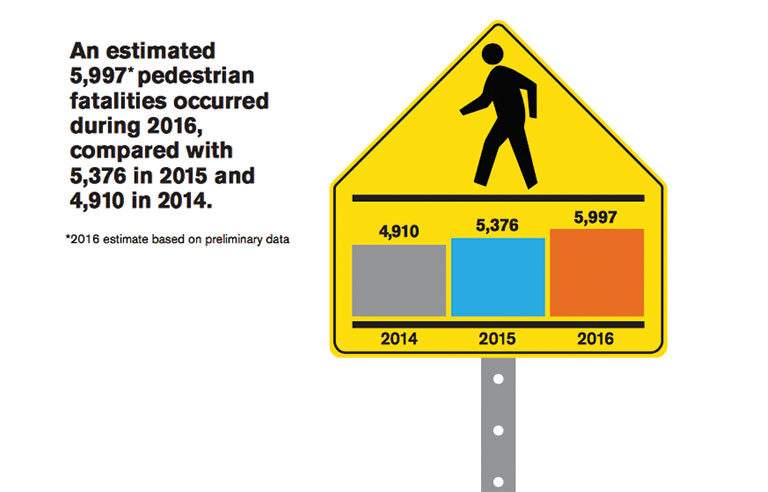Pedestrian deaths reach highest total in 40 years: report

Washington – Pedestrian deaths in 2016 increased an estimated 11 percent from 2015, marking the largest annual increase since reporting began, according to a recent report from the Governors Highway Safety Association.
After adjusting preliminary data for underreporting, GHSA found that 2,660 pedestrians were killed in the first six months of 2016, compared with 2,486 in the first half of 2015. The projected increase marked the largest year-to-year climb since the Fatality Analysis Reporting System began collecting data in 1975. Overall, pedestrians make up about 15 percent of motor vehicle crash-related fatalities.
GHSA pinpointed several possible contributing factors, including:
- An increase in motor vehicle travel
- Cellphone use among drivers and pedestrians
- Walking to work or for health reasons is gaining in popularity
Among states, the number of pedestrian deaths in the first half of 2016 ranged from one in Wyoming to 359 in California. California, Florida, New York and Texas accounted for 42 percent of all pedestrian deaths.
“Everyone walks, and we want to encourage that, but at the same time we want to make sure that we all get to our destinations safely,” Jonathan Adkins, executive director of GHSA, said in a press release. “Unfortunately, this latest data shows that the U.S. is not meeting the mark on keeping pedestrians safe on our roadways. Every one of these lives represents a loved one not coming home tonight, which is absolutely unacceptable.”
The National Safety Council expressed concern over the data in a statement released March 30.
“The National Safety Council is alarmed by new numbers from the Governors Highway Safety Association indicating a historic rise in pedestrian fatalities last year,” the statement reads. “Pedestrians are among our most vulnerable roadway users. They are unprotected and, in most cases, outnumbered. As motor vehicle deaths continue to climb, we must not forget that the risks we are all facing extend to the sidewalks, too. Everyone deserves safe passage, and these numbers are yet another indication that we must do more to keep each other safe.”
Post a comment to this article
Safety+Health welcomes comments that promote respectful dialogue. Please stay on topic. Comments that contain personal attacks, profanity or abusive language – or those aggressively promoting products or services – will be removed. We reserve the right to determine which comments violate our comment policy. (Anonymous comments are welcome; merely skip the “name” field in the comment box. An email address is required but will not be included with your comment.)

